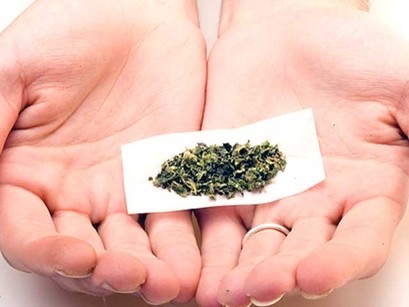As the realities of legalized marijuana take hold in four states and the District of Columbia, legislators and regulators could learn a lot from the successes — and failures — of the tobacco and alcohol industries in keeping their harmful products out of the hands of children and adolescents.
So say three Johns Hopkins Bloomberg School of Public Health researchers in a commentary published May 4 in the journal Pediatrics.
“The early days of marijuana legalization present a unique window of opportunity to create a regulatory environment that minimizes youth access,” says study leader Brendan Saloner, PhD, an assistant professor in the Department of Health Policy and Management at the Bloomberg School. “States should heed lessons learned from tobacco and alcohol regulations, which have proven very difficult to change despite research linking weak monitoring and low prices to underage use. Our number one priority has to be to keep our children safe.”
Voters in Colorado, Washington, Oregon, Arizona and D.C. have passed laws legalizing recreational marijuana and additional states could follow. A number of states are actively debating proposals to decriminalize recreational marijuana. When marijuana use is legalized for adults – all of the current laws make it legal only for people over the age of 21 – it normalizes the behavior and can put the drugs more easily into the hands of young people, the researchers say.
Saloner says research into how tobacco and alcohol regulations do or do not protect children from those products is robust.
He and his co-authors — Colleen Barry, PhD, MPP, and Beth McGinty, PhD, MS, — suggest four strategies to prevent marijuana use among minors.
First, they say, regulators should use tax policy to keep prices high. “Research has shown that young people are particularly price sensitive and tend to reduce cigarette use at higher rates than adults after price increases,” says McGinty, also an assistant professor in the Department of Health Policy and Management at the Bloomberg School.
Second, retail availability of marijuana should be tightly regulated, they say. Despite age-limit restrictions, many teens are able to obtain alcohol and tobacco in stores. This could be mitigated by stronger enforcement of existing laws, including more compliance audits and stiffer penalties. States should also regulate locations of marijuana retailers, such as keeping them away from playgrounds and schools, which research has shown can reduce risk of youth use. They also suggest prohibiting stores that sell other products from selling marijuana.
Third, they say, efforts need to be made to prevent the harms of accidental ingestion by children, by regulating the appearance of foods containing marijuana and reducing the amount of THC (marijuana’s main mind-altering ingredient) in these foods. Tobacco products that feature candy or fruit flavors encourage experimentation, regular use and addiction among youth, they say.
“Regulators need to be especially aware of how appealing marijuana-laced candies and cookies look to children and adolescents,” says Barry, an associate professor in the Department of Health Policy and Management at the Bloomberg School.
Also, childproof packaging can prevent accidental ingestion, which has been shown to be effective for prescription drugs. Clear labeling of marijuana products can also enhance the ability of adults to identify harmful products.
In June 2014, Washington state enacted emergency rules banning images of cartoons, toys and other pictures that appeal to young children on marijuana-infused food products and Colorado regulates child-safe packaging of marijuana products.
Fourth, they suggest that marketing of products should be restricted. Exposure to alcohol and tobacco advertising is associated with increases in youth use, studies have shown.
Still, Saloner says, marijuana will create its own set of issues that go beyond what has occurred with tobacco and alcohol. For example, marijuana can be grown at home and it is harder to regulate what is going on in people’s backyards.
“We have a lot of rigorous science to inform us about how to move forward but we will have to learn on the fly and be flexible due to these new challenges,” he says.



It seems to me that it could be beneficial to have marijuana sold in liquor only establishments which already have relatively tight restrictions on sales (lax enforcement not withstanding) and would allow inspections to be conducted in a systematic and well established way.
The whole concept that children will have greater access to marijuana is really pushing on a string. I came of age in the 1960’s in NYC and can tell you for a fact that children as young as 12 yrs old were already experimenting with marijuana, and except for some variations over the ensuing decades, I highly doubt that as a percentage, there has not been any change in usage by children. And despite the fact that it is finally becoming legal (which I absolutely believe it should be), I seriously doubt this will increase use by children due to the well established illegal distribution channels.
Finally, in regard to the understandable suggestions for maintaining higher prices and related issues due to the ease of growing marijuana at home, the downside of this approach (which may not negate the above mentioned restrictions) is that high prices will help foster and maintain illegal sale channels, which in turn increases buyer exposure to other much more dangerous drugs. The idea should be to destroy the illegal sales market which will help to keep marijuana out of the hands of youngsters. A real balance is needed in this regard. In terms of home grown marijuana, it likely should be restricted to indoor grows only. While I realize growing indoors doesn’t negate access by youth – it will significantly reduce it compared to outdoor grows that are more widely seen and easily stolen in the dead of night.